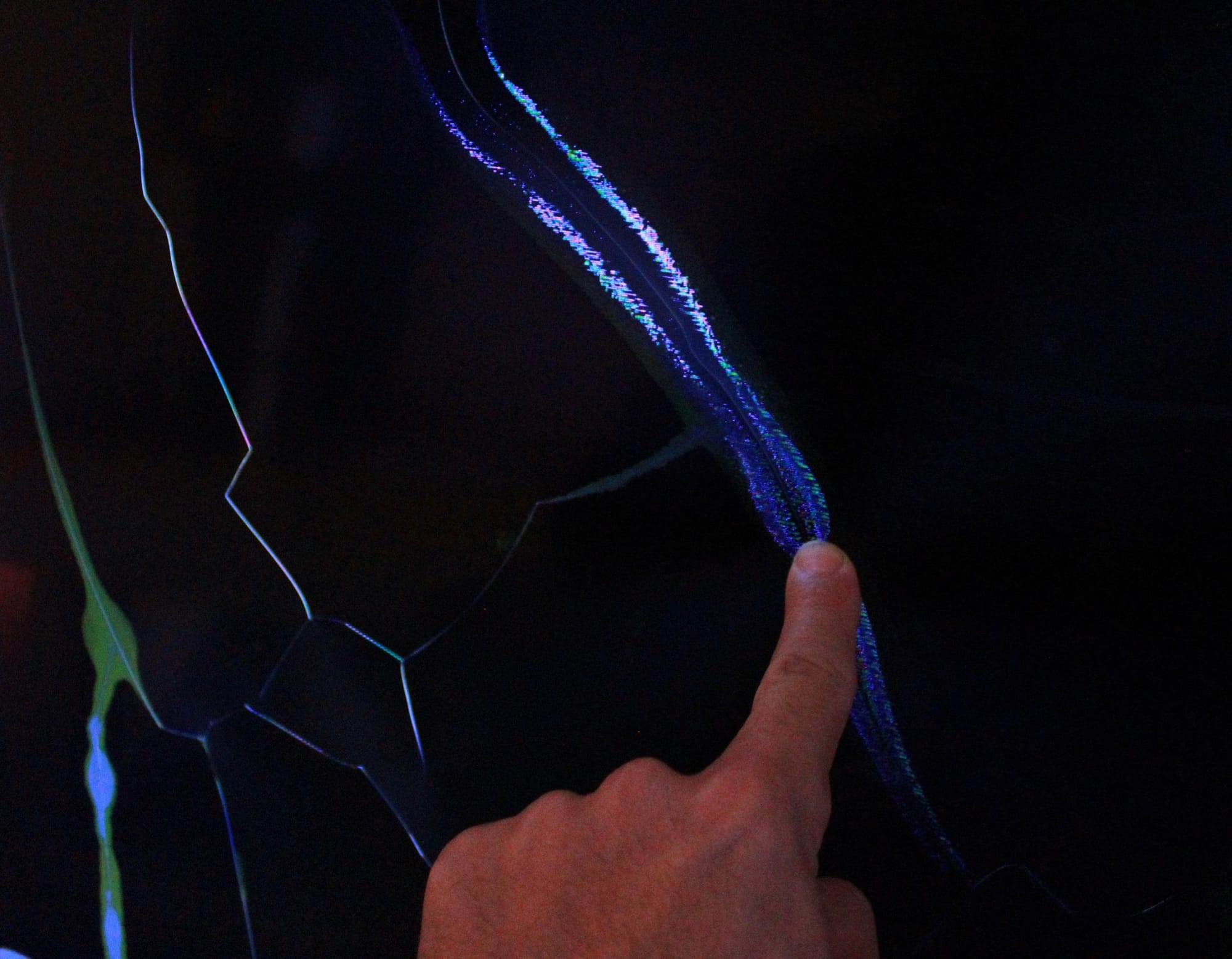Among the digital video detritus of Kit Young’s installation at the Ely Center of Contemporary Art is a cracked screen with a sign rarely seen in a gallery: “Please touch.” With the first hesitant brush of a finger, there’s almost no effect. But press a little harder, and the cracks bloom with almost bioluminescent patterns. Whether this effect is something Young designed or discovered is beside the point. In pressing into the screen, the viewer has helped make the art happen —even if, just as quickly, it starts to fade.
That’s part of the idea behind “Ephemeral Machines, Transient Humans,” Young’s solo show at the Ely Center of Contemporary Art. It’s one of three solo shows — the other two being Brian Stephens’s show “As Soon as the Sun Comes Up” and Daniel Recinos’s “My First Time Painting” — running now through Nov. 5 on the second floor of the center at 51 Trumbull St.
“The work here is impermanent in its performative, improvisational, and collaborative making. You, the viewer, are invited to participate as collaborator,” Young writes in an accompanying statement. “Your image will show through the circuitry of the machines. The machines are analog, and non-computational. No data is saved; there is no data! The images are fleeting and disappear as you leave the room. But feel free to capture your experiments with your cell phone camera. That data will be lost one way or another too.”
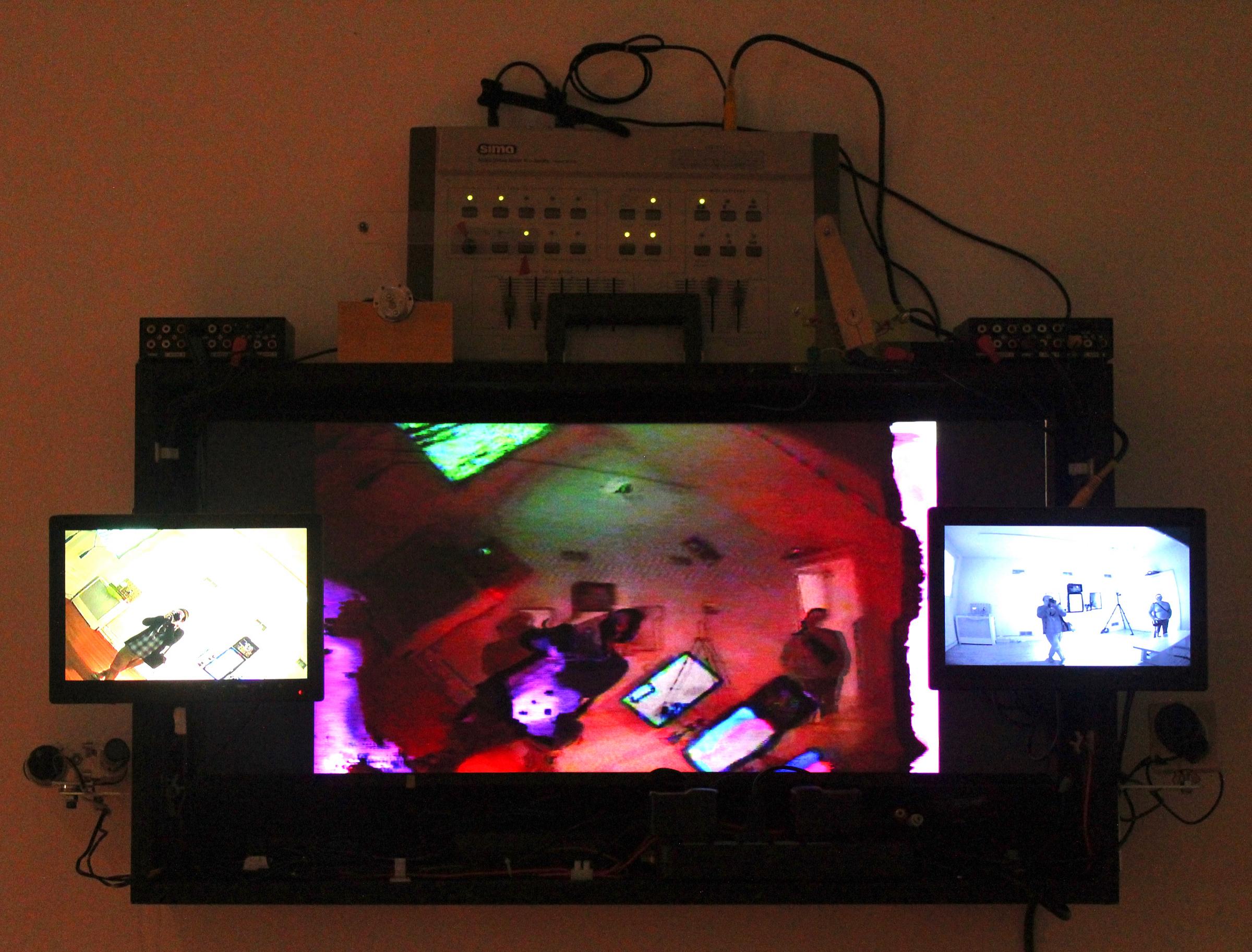
Things can get pretty meta for those of us who arrive with a camera, as the installation can catch you taking a picture of the cameras that are, in turn, taking a picture of you. And how long will this image last? When will the New Haven Independent’s website vanish?
Young gets the viewer to ask such questions in the context of a larger point. “This project comes out of meditations on deep time and the visions of fossilized internal combustion vehicles, buried under eons of sediment, that those meditations bring,” Young writes. “Readings on the Anthropocene and the 6th extinction, being brought about by our self-made climate crisis, drive home the impermanence and absurdity of the progress of man. Have we completed 90 percent of the arc of our species? And yet our backyard garden is supplying us with amazing and delicious food, grown from seed, water, and earth. The goldfinches are stopping by for a feast as the sunflowers go to seed.… Can we coexist instead of extracting to the point of exhaustion? Do we need ridiculously rich racists to make decisions for us?”
Young may have an eye on the garden, but such things aren’t found in the show itself, which focuses on janky machines, pixellated videos, the kind of technology that almost seems to degrade before our eyes. If this kind of half-baked surveillance state is all progress has to offer, maybe it’s time to go outside after all.
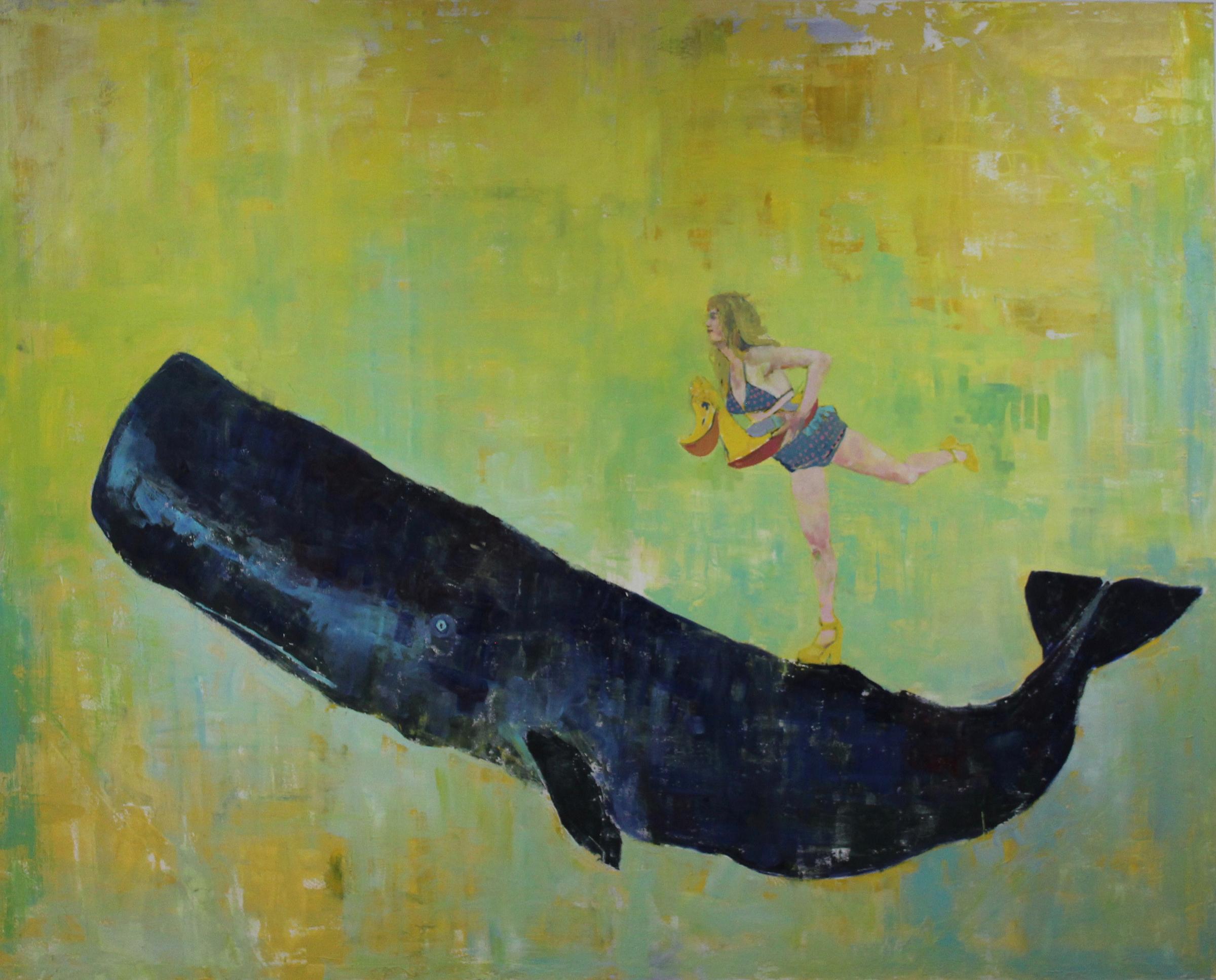
Or, we can go down the hall to Brian Stephens’s canvases, where a surrealism reigns that’s equal parts playful and ominous. “Brian Stephens was raised in the quaint town of North Stonington, Connecticut. He became interested in photography before realizing his passion for painting in its roots.… Even though painting is like breathing for Stephens, he also sometimes is traversing the mediums including a wide array of materials within his pieces and working on video and installation projects.”

Stephens’s stated willingness to move from medium to medium informs his strict paintings, which have a sense of collage about them. In both As Soon as the Sun Comes Up and My Lucky Charm, the figures are essentially pasted as crisp images onto luminous but abstract backgrounds. And while Charm’s bird droops its head toward the ground in a gesture of melancholy not often seen in animals, the woman riding the whale (completely out of scale) is in a precarious spot, as though the whale will soon turn and take its revenge.
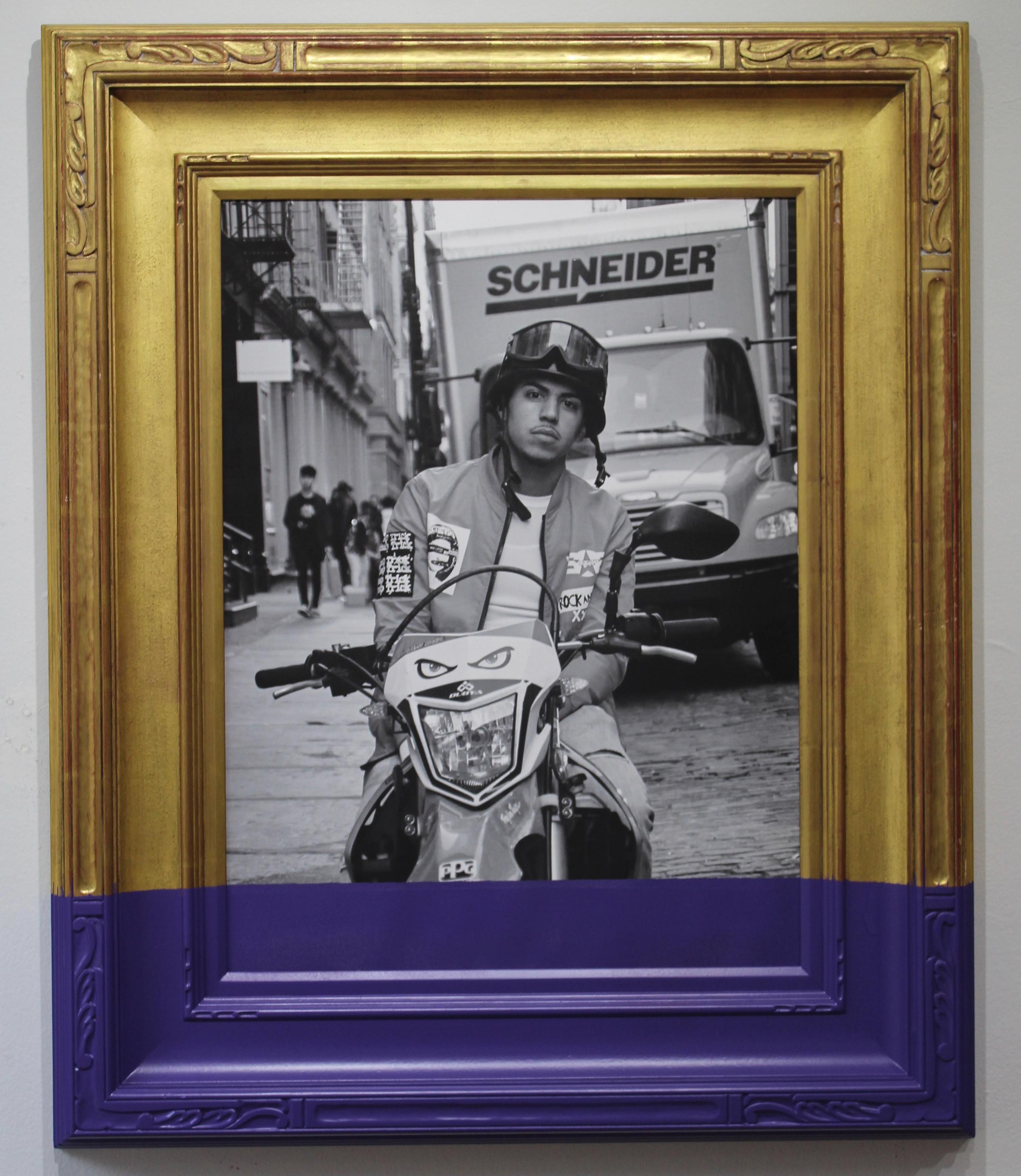
Daniel Recinos, meanwhile, makes the frame of the piece part of the art, as photograph and image both get a stripe of color from one side, as if the piece has been dipped in a vat of paint. Why? Recinos has described his art as being “all about portraying honesty and honor through nontraditional methods which spark curiosity.” Recinos is unusual among the artists whose work appears in New Haven’s galleries in that he has an active life working for corporate clients, from Red Bull Energy to Adidas and Danone Foods. “His work includes sports and lifestyle photography, as well as commercial and editorial videography,” his bio states. “Daniel prides himself on his never dying curiosity and his dedication to producing real and raw content that will leave his audience in awe.”
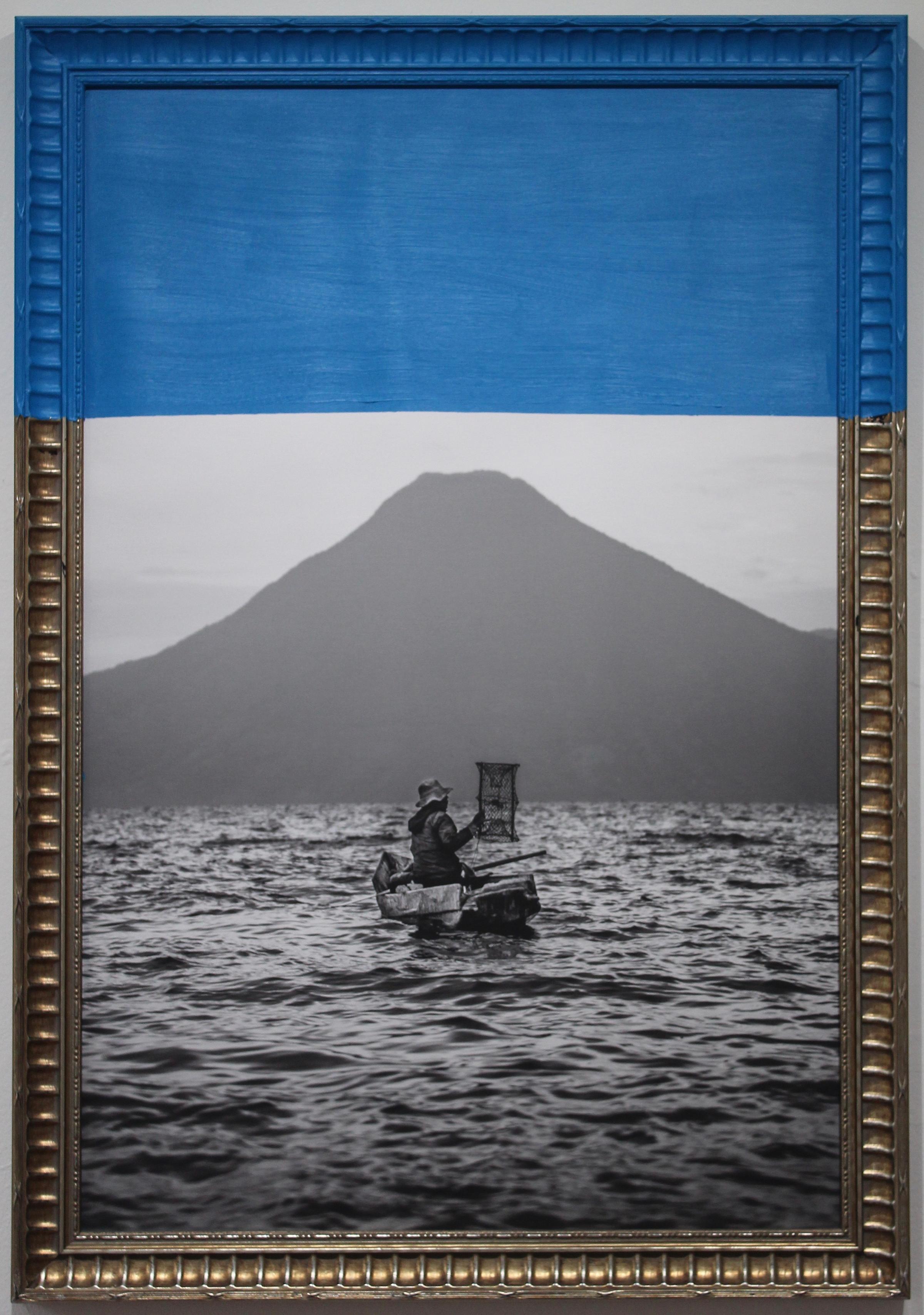
Recinos’s ability to capture a striking image no matter where he goes is never in doubt — and judging from the photos in his show, he gets around. The vividness of the stripes of color and their placement on the photo and frame work at odds with one another in intriguing ways. If the colors were darker, or if the paint were allowed to drip, there might be more of a sense of menace about it, an encroaching of something onto the subject of the photograph. But the popping colors make it about something else. They make the images feel like something more like a series, in almost a branding exercise. The photographs are of disparate subjects, from marchers to laborers. The stripes of colors unite them into a whole, inviting a viewer to find connections, too, perhaps to open the door to empathy.
The three solo shows run at the Ely Center of Contemporary Art, 51 Trumbull St., through Nov. 5. Visit the Ely Center’s website for hours and more information.
